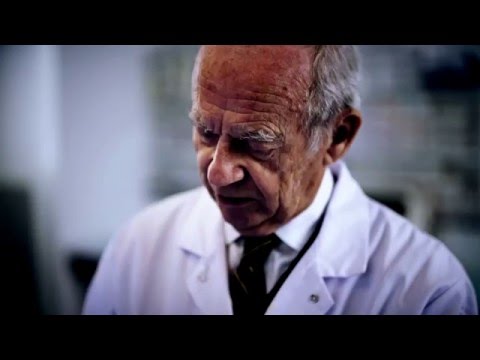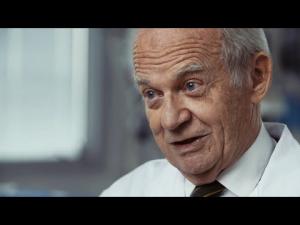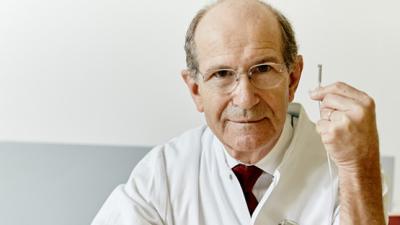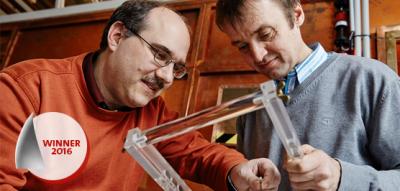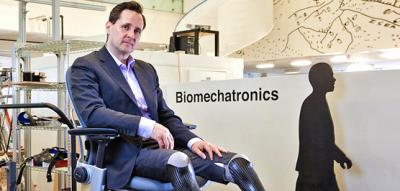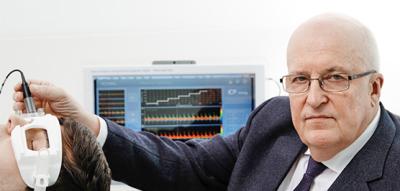Alain Carpentier
Implantable artificial heart
Finalist for the European Inventor Award 2016
The Carmat heart is a huge step forward in the field of cardiology. While heart disease remains the leading cause of death in the world, Carpentier's biocompatible, battery-powered mechanical pump aims to do more than just keep patients alive while they wait for a transplant – it is built to last for at least five years. Thanks to its unique design – specifically its ability to self-regulate blood flow – it improves the quality of life during that time.
Societal benefit
The Carmat heart betters lives through availability, longevity and comfort. At any given time, there are around 100 000 people around the world suffering from heart disease and waiting for transplants. On the other side of the equation is a small pool of only around 4 000 available donors. Carpentier's device could help answer chronic shortages, as it is the closest modern technology has ever come to a permanent replacement for a malfunctioning heart. Made to last at least five years, the Carmat heart can potentially extend a patient's life by roughly 230 million heartbeats. And the fact that it's self-regulating means cardiac patients can exert themselves to varying degrees without fearing exhaustion or fatigue.
Economic benefit
Carmat, the company Carpentier spun off from EADS in 2008 to market his new device, celebrated its inaugural surgery in 2013. The operation was a resounding success and wider clinical trials in Europe will likely follow soon. Still, the market for artificial hearts remains modest. Fewer than 2 000 people have received entirely artificial hearts in the last 30 years, because they are still regarded as a stop-gap solution to keep patients alive until suitable donors can be found. Carpentier's other innovations have had a much more profound impact on the field of cardiology both monetarily and in terms of the number of lives saved.
Of the roughly 50 000 patients in the US who undergo open-heart surgery for heart valve problems, 70% are treated with techniques and technology developed by Carpentier. That's substantial, considering total global sales of heart valve repair and replacement procedures are estimated to be worth more than EUR 1.5 billion. Carmat had its IPO on the NYSE Euronext exchange in 2010 and is currently valued at around EUR 182 million (USD 205 million). The Carmat heart is expected to cost around
EUR 150 000.
How it works
What the human heart achieves through the body's central nervous system, the Carmat heart does with sensors, software and microelectronics. For the ventricles – the chambers of the heart that receive blood, channel it through the lungs, and pump freshly oxygenated blood back into circulation – Carpentier used two electric motors attached to hydraulic pumps. All this hardware is powered by wearable lithium batteries. What's more, internal components are covered in a layer of chemically treated cow tissue to prevent post-surgical blood clotting – a common problem among heart patients.
The inventor
Alain Carpentier was once asked to comment on the implantation of the world's first fully artificial, self-regulating heart. He replied by quoting the 19th-century French scientist Claude Bernard: "Whatever the poets may say, the heart is just a pump". Over the course of his decades-long career, Carpentier has dedicated himself to facilitating the proper function of this important, albeit unromantic, pump. He graduated with a PhD in medicine from the University of Paris in 1966, and within two years he was working as a cardiac surgeon at the Hôpital Broussais in the French capital. By 1975, he had acquired a second PhD in chemistry, providing him with the know-how to design the "Carpentier-Edwards valve", an artificial heart valve that contained animal flesh and became the world's first artificial valve in widespread clinical use. In 1983, he wrote a landmark paper that redefined treatment of malfunctioning heart valves, earning him the revered status in medical circles as the father of reconstructive valve surgery. In addition to being promoted to head of the Hôpital Broussais' Department of Cardiovascular Surgery and Organ Transplantation, a position he held until 2000, he has been the recipient of many distinctions and honours around the world.
Did you know?
The human heart is a robust muscle. Good thing too - if you live to see your 80th birthday, your heart will have beaten more than 3 billion times! Beating roughly 100 000 times per day, the heart supplies blood to nearly all parts of the body except the corneas.
Carpentier joins a team of Dutch inventors who invented dynamic pacemakers as cardiologists nominated for the European Inventor Award.
Media gallery
Contact
European Inventor Award and Young Inventors Prize queries:
european-inventor@epo.org Subscribe to the European Inventor Award newsletterMedia-related queries:
Contact our Press team#InventorAward #YoungInventors
